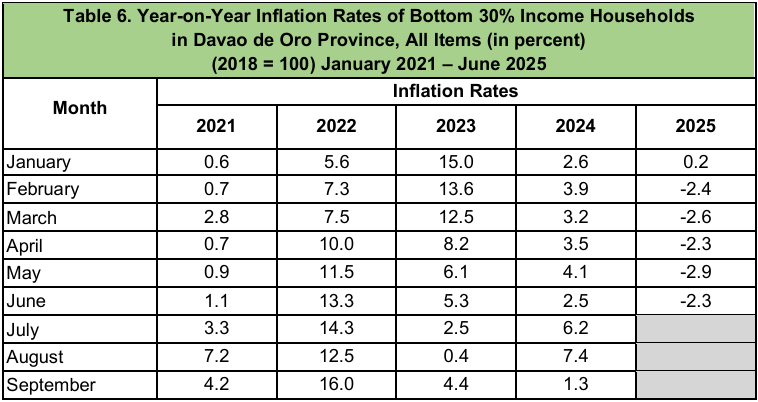The headline inflation or the overall inflation in the province of Davao de Oro for the Bottom 30% Income Households accelerated to -2.3 percent in June 2025 from -2.9 percent in May 2025. This brings the year-to-date provincial average inflation rate to -2.1 percent. Inflation of prices in June 2024 was observed at 2.5 percent. (Table 1 and Figure 1)
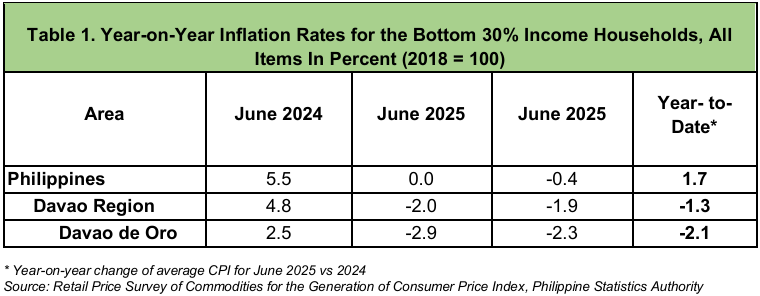
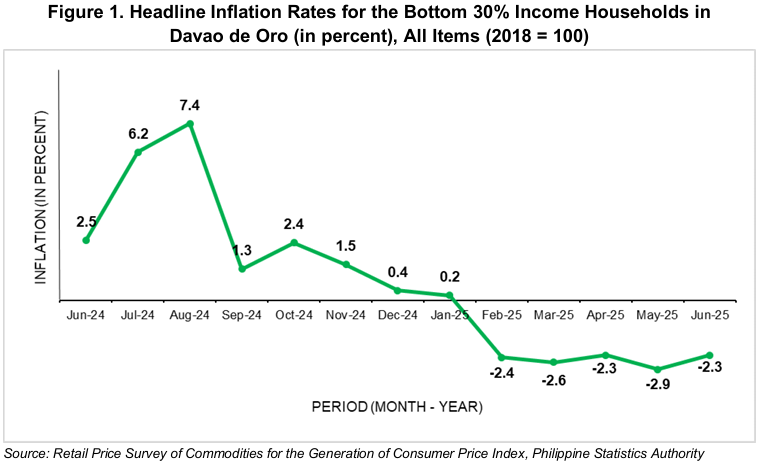
The uptrend in the provincial inflation for the Bottom 30% Income Households was mainly driven by the higher inflation rate in the index of the following commodity groups:
a. Housing, water, electricity, gas and other fuels at 5.6 percent from 1.5 percent in May 2025;
b. Transport at -1.1 percent from -2.4 percent in May 2025; and
c. Food and non-alcoholic beverages at -6.6 percent from -6.7 percent in May 2025.
The percentage share of the above-mentioned commodity groups in the overall inflation for the Bottom 30% Income Households in June 2025 are as follows:
(a) Housing, water, electricity, gas and other fuels at 71.7 percent;
(b) Transport at 11.3 percent and
(c) Food and non-alcoholic beverages at 6.8 percent. (Table 2)
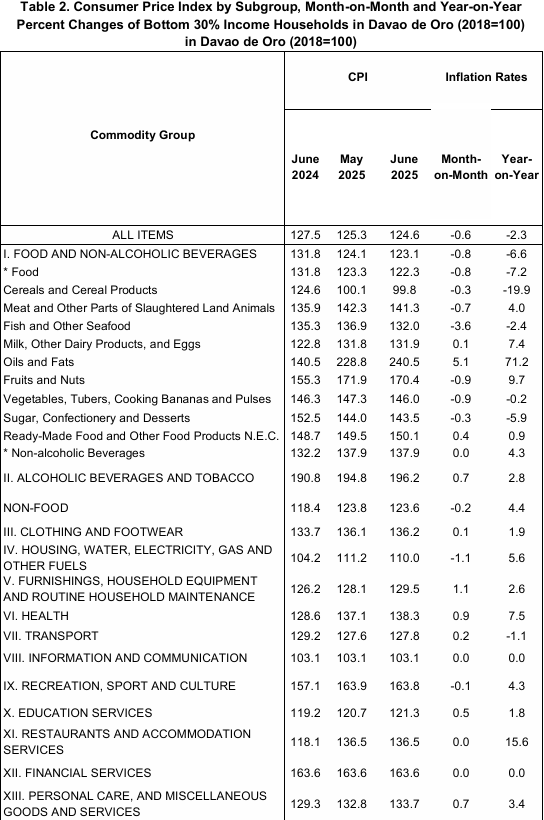

The following commodity groups also posted a faster annual increment in their respective inflation rate for the month of June 2025:
a. Personal care, and miscellaneous goods and services at 3.4 percent;
b. Furnishings, household equipment and routine household maintenance at 2.6 percent;
c. Alcoholic beverages and tobacco at 2.8 percent;
d. Clothing and footwear at 1.9;
e. Health at 7.5 percent; and
f. Education services at 1.8.
On the other hand, only the Restaurants and Accommodation Services commodity group posted a slower annual increase in inflation for the Bottom 30% Income Households, recording a rate of 15.6 percent in June 2025.
Meanwhile, the indices of the following commodity groups remained at their respective previous month’s annual rates:
a. Information and communication at zero percent;
b. Recreation, sport and culture at 4.3 percent; and
c. Financial services at zero percent.
The Food and non-alcoholic beverages commodity group had the highest contribution for the month’s inflation rate with 175.9 percent share (-4.05 points) and -6.6 percent inflation rate. As to the share to the month’s inflation rate of the said commodity group, Cereals and cereal products posted the highest percentage share of 225.2 percent (-5.18 points) and had a -19.9 percent inflation rate. This was followed by Fish and other seafood with a 10.2 percent share (-0.23 points) and -2.4 percent inflation rate. Sugar, confectionery and desserts had the third highest percentage share of 4.2 percent (-0.10 points) with -5.9 percent inflation rate. (Table 3)
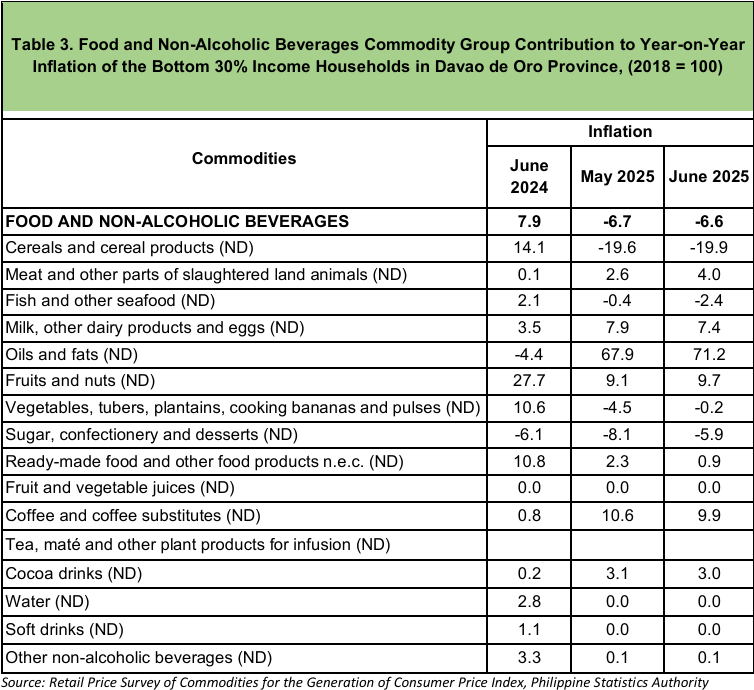
The second highest contributor is the Transport commodity group with 3.6 percent share (-0.08 points) among all items. As to the share to the month’s inflation rate of the said commodity group, Fuels and lubricants for personal transport equipment posted the highest share of 9.9 percent (-0.23 points) with -8.9 percent inflation rate. (Table 4)
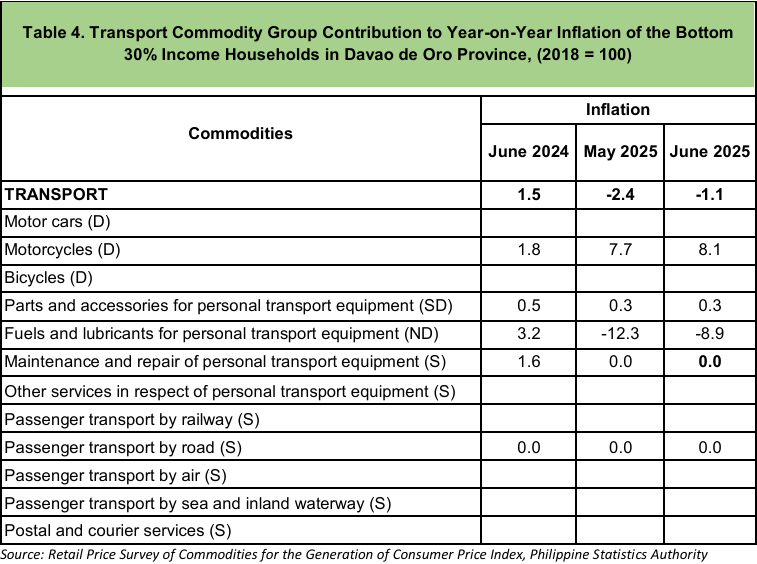
The table below summarizes the inflation rates from January 2021 to June 2025 since the rebasing of the market basket with 2018 as the base year.
